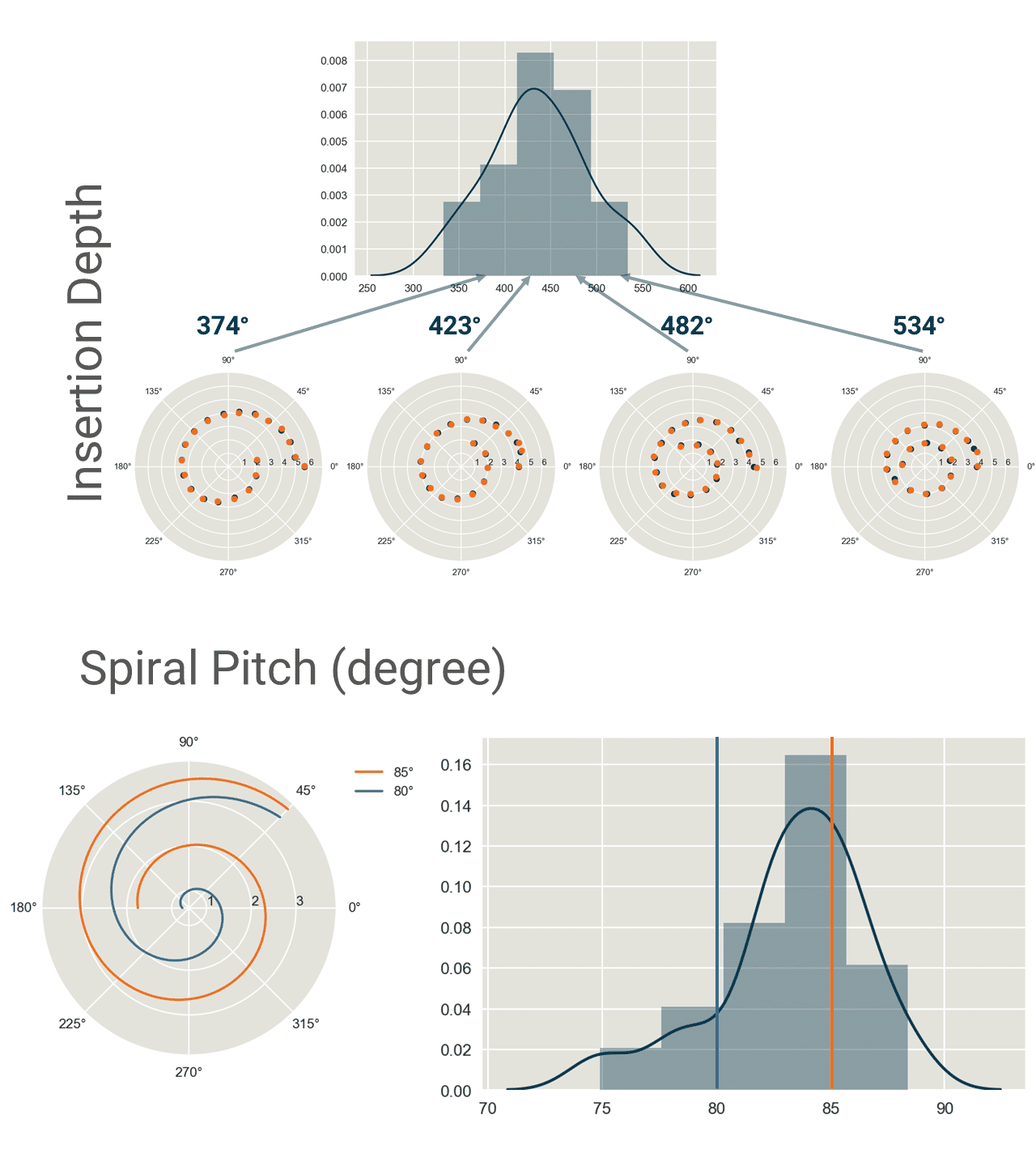
Insertion Depth and Curvature Assessment of Cochlear Implantation
1,2
2,3
2
1
2
4
3
1Scientific and Clinical Research Department, Oticon Medical, France
2Epione Research Project, Inria, Sophia Antipolis, France
3Head and Neck University Institute, Nice University Hospital, France
4Medical Imaging Department, Nice University Hospital, France
2Epione Research Project, Inria, Sophia Antipolis, France
3Head and Neck University Institute, Nice University Hospital, France
4Medical Imaging Department, Nice University Hospital, France
BACKGROUND: Cochlear implant surgery is performed with limited patient-specific setup, peroperative sensitive feedback and postoperative quality control. Several parameters of the electrode array design vary depending on the products proposed by cochlear implant manufacturers: length, electrodes number, diameter, pitch, rigidity, reference curvature, etc. The link between those parameters and the clinical outcomes such as insertion trauma and hearing restoration is not completely understood and controlled.
OBJECTIVE: 1.Propose a new method for the assessment of the insertion depth and the curvature from clinical postoperative images and cadaveric microdissection and 2.Study the variability and the correlation between cochlear size, lateral wall curvature and insertion depth.
METHODS: 50 implanted cochleae were analyzed. Measurements were performed automatically from 25 Cone Beam CT images and 15 CT images and manually from 15 microdissections. Global size of the cochlea, local curvature of the lateral wall and the modiolar axis were automatically and precisely estimated. A scalar quantity called the spiral pitch was defined in order to characterize the overall curvature of the lateral wall.
RESULTS: Large variation were found with, amongst others, insertion depth from 355° to 537° and spiral pitch from 78° to 88°. Despite the large dependence between spiral pitch and cochlear duct length, no linear correlation between spiral pitch and insertion depth was observed.
CONCLUSIONS: An increase in cochlear curvature may lead to an increase in insertion forces. Based on preoperative measurements, patient-specific lateral wall electrode array could be chosen not only based on the length but also on the rigidity.
Powered by Eventact EMS
